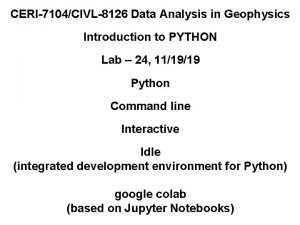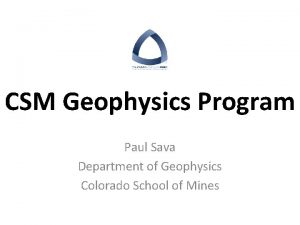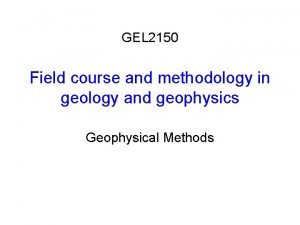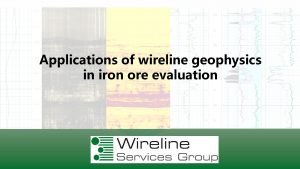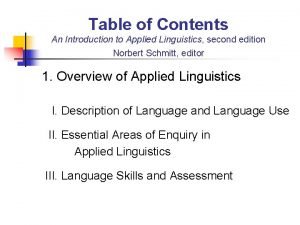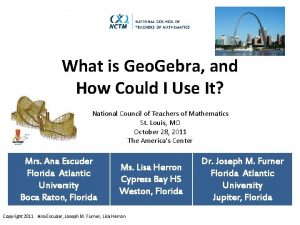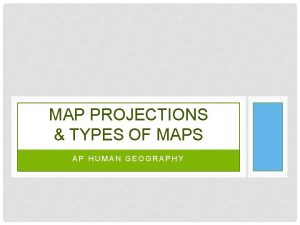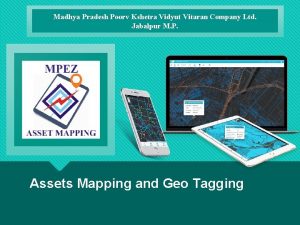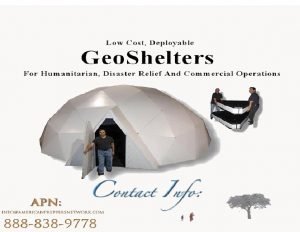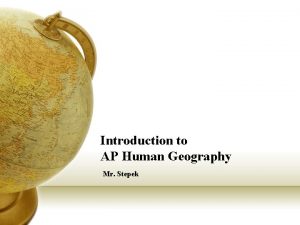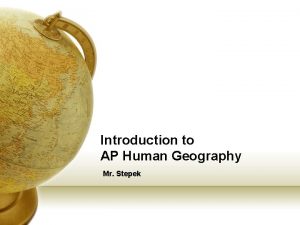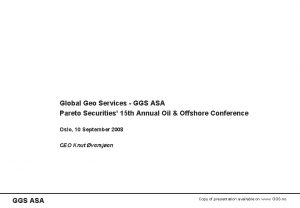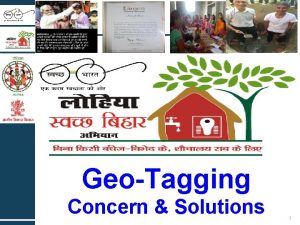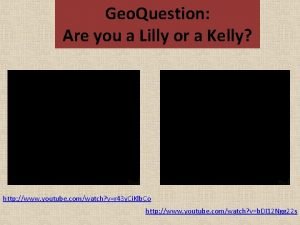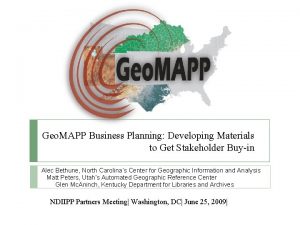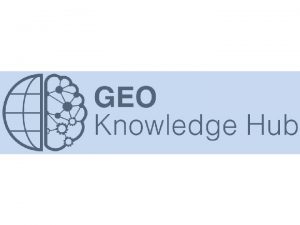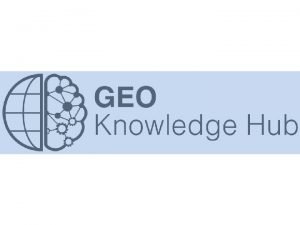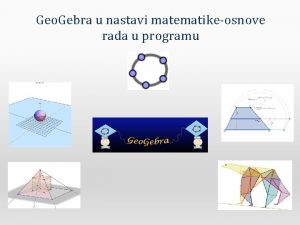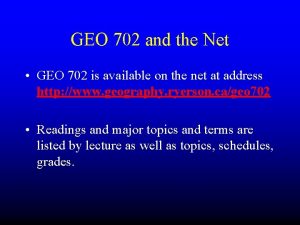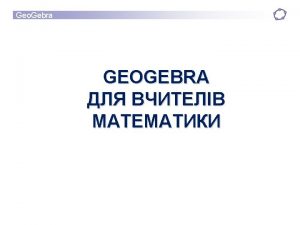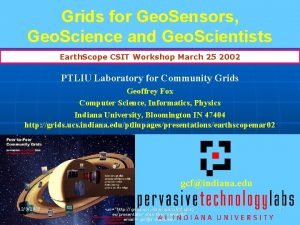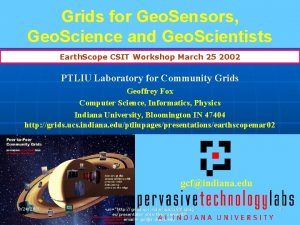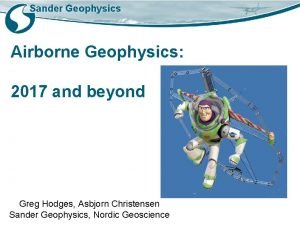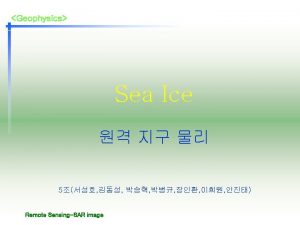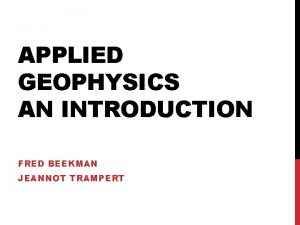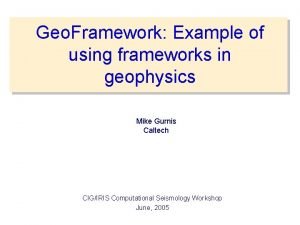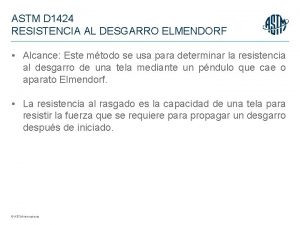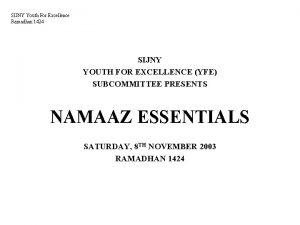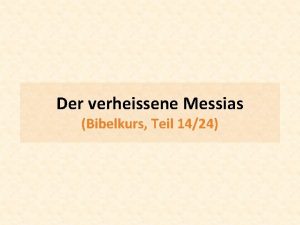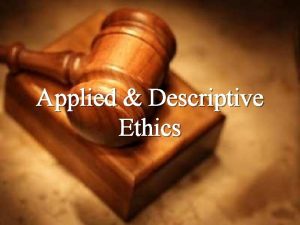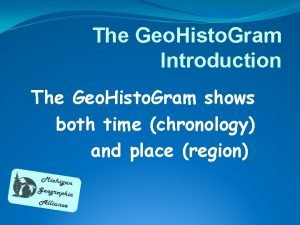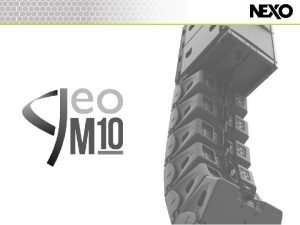Applied Geophysics GEO 4 1424 A Introduction to























- Slides: 23

Applied Geophysics (GEO 4 -1424 A) Introduction to Applied Geophysics & Geophysical Exploration Prof Jeannot Trampert J. A. Trampert@uu. nl Dr Fred Beekman W. W. W. Beekman@uu. nl Dr Elmer Ruigrok E. N. Ruigrok@uu. nl (coordinator)

What is applied geophysics Geophysics is the application of physical principles and methods to solve problems in Earth Sciences There is no clear distinction between geophysics and applied geophysics, however a practical definition could be that applied geophysics is the application of geophysical methods for commercial purposes (“making profit”). • Examples: § Exploration for oil, gas, coal, minerals, … § Search for groundwater § Determination of ground properties for geoengineering (tunnels, dams, …) § Geophysical archeology § Pollution mapping § … 2

Physical methods used in applied geophysics Ø Borehole geophysics: well logging; core sampling Ø Seismic methods: refraction and reflection seismics; VSP; seismic surveys Ø Gravity surveying: density contrasts; anomalies; gravimeters; corrections Ø Geomagnetic surveying: induced rock magnetism; anomalies Ø Electromagnetic surveying: EM fields; survey methods; ground penetrating radar (GPR); magneto-tellurics (MT) Ø Electrical surveying: resistivity; VES soundings; Ø Radiometrical surveying: radioactive decay; isotopes; dating; Ø Geothermal methods: heat flow; temperature; conduction; 3

Course structure The course consists of lectures, exercise classes, computer practicals and a short field work practical (1 day) Introduction to Applied Geophysics 4

Course overview Aim: to get an understanding of the fundamental concepts of geophysical exploration techniques and being able to put these concepts in practice. Content: Geophysical techniques are widely used in civil engineering, in environmental monitoring and of course in oil and mineral prospecting. We will give an overview of the classical potential field and seismic methods. The course will review the basic physical principles underlying the various exploration techniques and will show the field data are acquired and interpreted. During the computer practicals the students will solve a range of realistic problems. Students will acquire an appreciation for which techniques are appropriate for which application. There will also be a seismic fieldwork week and interpretations afterwards. Grading: No exam Final mark = exercise reports and paper presentation (50%) + field work report (50%) Deadline: June 29! Note: remedial only when final mark >= 4. 0 Introduction to Applied Geophysics 5

Literature 6

Why applied geophysics Ground model from an intrusive investigation: detailed information but only local and for limited depths Profiles from geophysical surveys: continuous but “remote” information Final interpretation of an combined approach with intrusive investigation targeted on geophysical anomalies 7

Applied geophysics infers property contrasts inside the earth from surface (borehole) measurements Contrasts in physical properties from different geological structures give rise to a target or an anomaly. When there is no contrast, the target is geophysically undetectable. 8

Seismic methods: mainly measure travel times and amplitudes of seismic waves, which depend on contrasts in density and elastic moduli Seismic methods: main application in hydrocarbon exploration 9

Potential field methods Gravity surveying: measuring and interpreting variations in the magnitude of the gravitational acceleration at the Earth’s surface due to density contrasts in the subsurface. 10

Potential field methods Geomagnetic surveying: measuring and interpreting variations in the intensity of the Earth’s magnetic field due to contrasts in magnetic susceptibility of rocks in the subsurface. 11

Electrical methods measure lateral variations of electrical resistivity due to spatial variations of electrical properties. Typical application: e. g. distinguish between fresh and salt water in subsurface in groundwater studies. 12

Electromagnetic methods measure lateral variations of electrical conductivity due to spatial variations of dielectric constant 13

Electromagnetic methods Ground penetrating radar (GPR): measures travel times of reflected radar waves of which the velocity is controlled by the dielectric constant 14

Geophysical methods 15

Geophysical exploration To select the most appropriate geophysical method to investigate a certain task/problem, the following aspects need to be considered: Ø What are the relevant physical properties? (porosity, permeability, seismic velocity, density, …) Ø What spatial scales are relevant? Ø What are the field conditions? (e. g. urban, offshore, …) Ø Which acquisition geometries are optimal? (e. g. 2 D vs 3 D seismics) Ø Is there useful a priori information? Ø Is there a cheaper alternative? The answer to these questions will depend strongly on the particular task/problem 16

Geophysical exploration Passive methods: use naturally present sources/fields to investigate properties of the subsurface Earth’s gravity field Ø Earth’s magnetic field Ø earthquakes Ø Active methods: use man-made source to image structure of subsurface explosions, air guns, … Ø EM waves Ø electrical currents Ø 17

Geophysical exploration • How many dimensions? 18

Geophysical exploration Time dimension 19

Geophysical exploration The data need to record the true signal => be aware of biased data! x x x x x A priori information of the spatial dimensions of target is required! 20

Geophysical exploration • Noise is also an issue 21

Geophysical exploration Geophysical data is often non-unique & ambiguous (irrealistic solution) non-unique (multiple solutions) solution 1 Solution 2 solution 3 solution 4 Ø Several geophysical methods should be used together Ø Interpretation requires geological knowledge 22

Geophysical exploration In summary the important considerations: Ø Need to understand problem & physical property to be measured. If physical principles are misunderstood, then results may be misinterpreted Ø Critical to select correct tool(s) for objective – either alone or as part of a larger survey Ø Limitations of study § physical, financial, temporal 23
 Python for geophysics
Python for geophysics Paul sava
Paul sava Gel geophysics
Gel geophysics Wireline geophysics
Wireline geophysics An introduction to applied linguistics norbert schmitt
An introduction to applied linguistics norbert schmitt Root word form
Root word form Geo gebraa
Geo gebraa Corageo
Corageo Mercator projection ap human geography
Mercator projection ap human geography Mpez geo app
Mpez geo app Geo shelter
Geo shelter Tele birt
Tele birt Graduated symbol map definition ap human geography
Graduated symbol map definition ap human geography Aggregation definition ap human geography
Aggregation definition ap human geography Global geo services
Global geo services Geotagging in panchayat
Geotagging in panchayat Geo gabra
Geo gabra Geo watch
Geo watch Utah mapp
Utah mapp Geo knowledge hub
Geo knowledge hub Geo knowledge hub
Geo knowledge hub Eksponencijalne nejednadžbe
Eksponencijalne nejednadžbe Danijela draskovic
Danijela draskovic Geo 702 ryerson
Geo 702 ryerson
